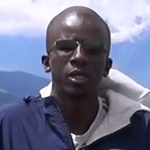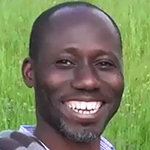This course, split up in two parts, presents the theoretical and practical fundamentals of Geographic Information Systems. It offers an Introduction to Geographic Information Systems that doesn't require preliminary knowledge in computer science. It allows to acquire quickly the basics that will let you create spatial databases and produce geographic maps. It is a practical course based on free softwares, QGIS among others

Course Details
| Language | English |
| Duration | 6 week |
| Effort | 8 hour/week |
Description
In sum, if your studies or your profession relate somehow to land management, to the analysis of spatially distributed objects, for instance in the fields of biology, public health, ecology, energy, and so son, this course is made for you ! Following this first part of the course, you will explore the fundamental principles of land digitization and spatial data storage. Among others, you will learn to:
- Characterize spatial objects and/or phenomenons (land modelling) according to their position in space (coordinate and projection systems, spatial relations) and to their intrinsic nature (object or vector mode vs. image or raster mode),
- Use various data acquisition methods (direct measurement, image georeferencing, digitization, existing data sources, etc.)
- Use various forms of spatial data storage - Simple files and/or relational databases
- Use data modelling tools to describe and implement databases
- Create queries using a data manipulation and querying language
The second part of the course deals with the methods of spatial analysis and the techniques of spatial data representation. Among others you will learn to:
- Analyze the spatial properties of discrete variables, for instance by quantifying the spatial auto-correlation
- Work with continuous variables (sampling, isovalue lines, interpolation methods)
- Use Digital Elevation Models and their derivatives (slope, orientation, etc.)
- Use spatial data overlay and interaction techniques
- Produce maps according to the rules of graphic semiology
- Explore other forms of spatial representation (interactive mapping on the web, 3D layouts, etc.)
Finally, there is an interactive forum for the attendees of the course at https://www.facebook.com/groups/mooc.gissig
Prerequisites
None
Plan
- Analysis - Discontinuous spatial phenomena
- Analysis - Continuous Spatial Phenomena
- Analysis - Digital Elevation Models
- Analysis - Integrating data layers
- Representation - Thematic mapping and graphic semiology
- Representation - Other forms of representation




